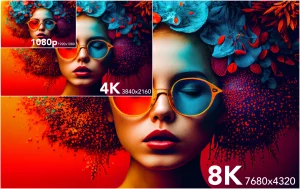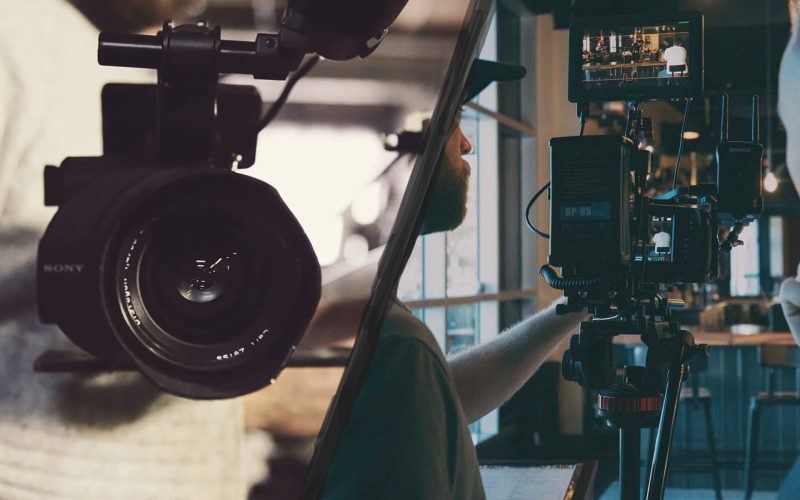Introduction
As the world of video production evolves at an incredible pace, staying updated with the latest trends is essential for anyone involved in media creation. In 2024, new technologies and changing audience expectations are shaping the way videos are produced, consumed, and shared. From AI integration to immersive experiences, video production is entering an exciting new phase. Let’s explore the top eight trends that will define video production in 2024.
Top Video Production Trends
1. AI-Powered Video Editing

AI has been transforming various industries, and video production is no exception. AI-powered tools are becoming increasingly sophisticated, enabling faster and more efficient editing. These tools can automatically edit raw footage, apply color grading, suggest transitions, and even enhance audio quality with minimal human input. This automation speeds up the process and reduces production costs, making it accessible to smaller creators.
In 2024, AI is changing how we edit videos. With AI-powered tools, video editors can now cut, organize, and improve footage faster than ever. Instead of spending hours on repetitive tasks, editors can focus on creativity. AI tools automatically adjust colors, fix sound, and even suggest the best scenes to use. This saves time and makes video production easier for both big companies and small creators.
Key Takeaway: In 2024, AI tools will revolutionize the workflow, allowing editors to focus more on creativity rather than mundane tasks.
2. Interactive Videos

Interactive videos are gaining momentum, offering viewers more control over their experience. In 2024, we expect to see a surge in the production of videos that allow viewers to make choices within the content, such as selecting story outcomes or exploring additional features. This trend enhances engagement by making the viewing experience more personal and immersive.
Key Takeaway: With the rise of interactive videos, brands and creators can deliver more engaging content that captivates audiences and encourages participation.
3. Vertical Video Dominance

With the rise of mobile content consumption, vertical videos have become increasingly popular. In 2024, vertical video formats will dominate platforms like Instagram, TikTok, and YouTube Shorts as more creators and brands adapt their content to suit the viewing habits of mobile users.
Key Takeaway: Brands and creators need to prioritize vertical video formats to reach wider audiences and cater to mobile-first platforms.
4. 4K and 8K Video Content

High-resolution content continues to grow in demand. 4K is becoming the new standard for high-quality production, while 8K is emerging for specific applications like virtual reality (VR) and cinematic experiences. While 8K is not yet mainstream, 2024 will see a rise in its usage, especially for high-end productions that require the finest visual detail.
High-quality visuals are more important than ever. While 4K is already a standard for many creators, 8K is starting to gain traction in the industry. Viewers expect crisp, detailed visuals, especially for virtual reality and big-screen experiences. Though 8K might not be needed for everyday content, investing in 4K cameras will help your videos look sharp and professional.
Key Takeaway: Investing in 4K and 8K technology will be crucial for creators looking to produce premium video content that stands out in a competitive market.
5. Remote Collaboration Tools

The rise of remote work has pushed video production teams to adopt collaborative tools that allow creators, editors, and producers to work together from different locations. Platforms like Frame.io and cloud-based editing software are making it easier to collaborate on video projects without being physically present in the same space.
Key Takeaway: Remote collaboration is not a temporary solution but a long-term trend that will continue to evolve and optimize video production workflows.
6. Live Streaming Popularity

Live streaming continues to gain traction, with platforms like Twitch, YouTube Live, and Facebook Live providing avenues for real-time interaction. In 2024, live video production will expand into new formats such as live shopping, live events, and interactive webinars. Brands will increasingly use live streaming to engage their audiences in real-time.
Key Takeaway: Live streaming offers brands a powerful way to connect with their audience, providing an authentic, unedited experience that fosters trust and loyalty.
7. Augmented Reality (AR) and Virtual Reality (VR) Integration

AR and VR are becoming integral to the future of video production. In 2024, expect to see more immersive experiences where AR overlays digital elements onto real-world videos and VR allows viewers to engage in fully immersive virtual environments. These technologies are revolutionizing industries like gaming, education, and real estate by providing dynamic, interactive content.
Key Takeaway: Incorporating AR and VR into video production will create immersive storytelling experiences that captivate audiences like never before.
8. Sustainability in Video Production

As concerns over environmental impact grow, video production is becoming more focused on sustainability. This includes using energy-efficient equipment, reducing waste during shoots, and choosing eco-friendly production practices. In 2024, companies will prioritize green initiatives to meet the demand for eco-conscious content creation.
Key Takeaway: Sustainable video production practices are not just a trend but a necessity as more companies and consumers push for environmentally responsible content.
Analysis Table: Key Insights on 2024 Video Production Trends
| Trend | Description | Impact on Video Production |
|---|---|---|
| AI-Powered Video Editing | AI tools automate repetitive editing tasks and enhance creativity. | Faster production, reduced costs, and increased accessibility. |
| Interactive Videos | Viewers can interact with content to choose outcomes and explore additional features. | Increases audience engagement and participation. |
| Vertical Video Dominance | Vertical formats cater to mobile-first platforms like Instagram and TikTok. | Essential for reaching mobile audiences effectively. |
| 4K and 8K Video Content | High-resolution content for superior visual quality and immersive experiences. | Critical for high-end productions and VR applications. |
| Remote Collaboration Tools | Cloud-based platforms enable video production teams to work together remotely. | Facilitates remote teamwork and flexibility in video production. |
| Live Streaming Popularity | Real-time content that engages audiences through platforms like YouTube Live and Twitch. | Builds real-time engagement and trust between brands and audiences. |
| AR and VR Integration | Augmented and virtual reality provide immersive video experiences. | Opens up new possibilities for interactive and immersive storytelling. |
| Sustainability in Video Production | Eco-conscious practices like energy-efficient equipment and reducing waste. | Responds to consumer and corporate demand for environmentally responsible practices. |
Comparative Table: Traditional vs. 2024 Video Production Trends
| Aspect | Traditional Video Production | 2024 Video Production |
|---|---|---|
| Editing | Manual editing requires significant time and effort. | AI-powered tools automate and enhance editing tasks. |
| Viewer Engagement | Linear storytelling without audience interaction. | Interactive videos allow viewers to control the content and outcomes. |
| Formats | Mostly horizontal, suitable for TV and desktop. | Vertical video is optimized for mobile first platforms. |
| Resolution | Standard HD and 4K in limited cases. | 4K as a standard, with emerging use of 8K for high-end experiences. |
| Collaboration | On-location production teams and physical meetings. | Remote collaboration via cloud-based tools and platforms. |
| Streaming | Pre-recorded content and live streaming are used in limited capacities. | Live streaming with real-time interaction and engagement. |
| Technology Integration | Minimal use of AR/VR; traditional filming techniques. | AR and VR integration for immersive experiences. |
| Sustainability Considerations | Little emphasis on eco-friendly practices. | Increasing focus on sustainability and environmentally conscious production. |
Conclusion
The video production landscape is undergoing significant changes in 2024. From the integration of AI to immersive AR and VR experiences, these trends will redefine how video content is created, distributed, and consumed. Companies and creators who embrace these innovations will be well-positioned to capture and engage their audiences in new and exciting ways.










